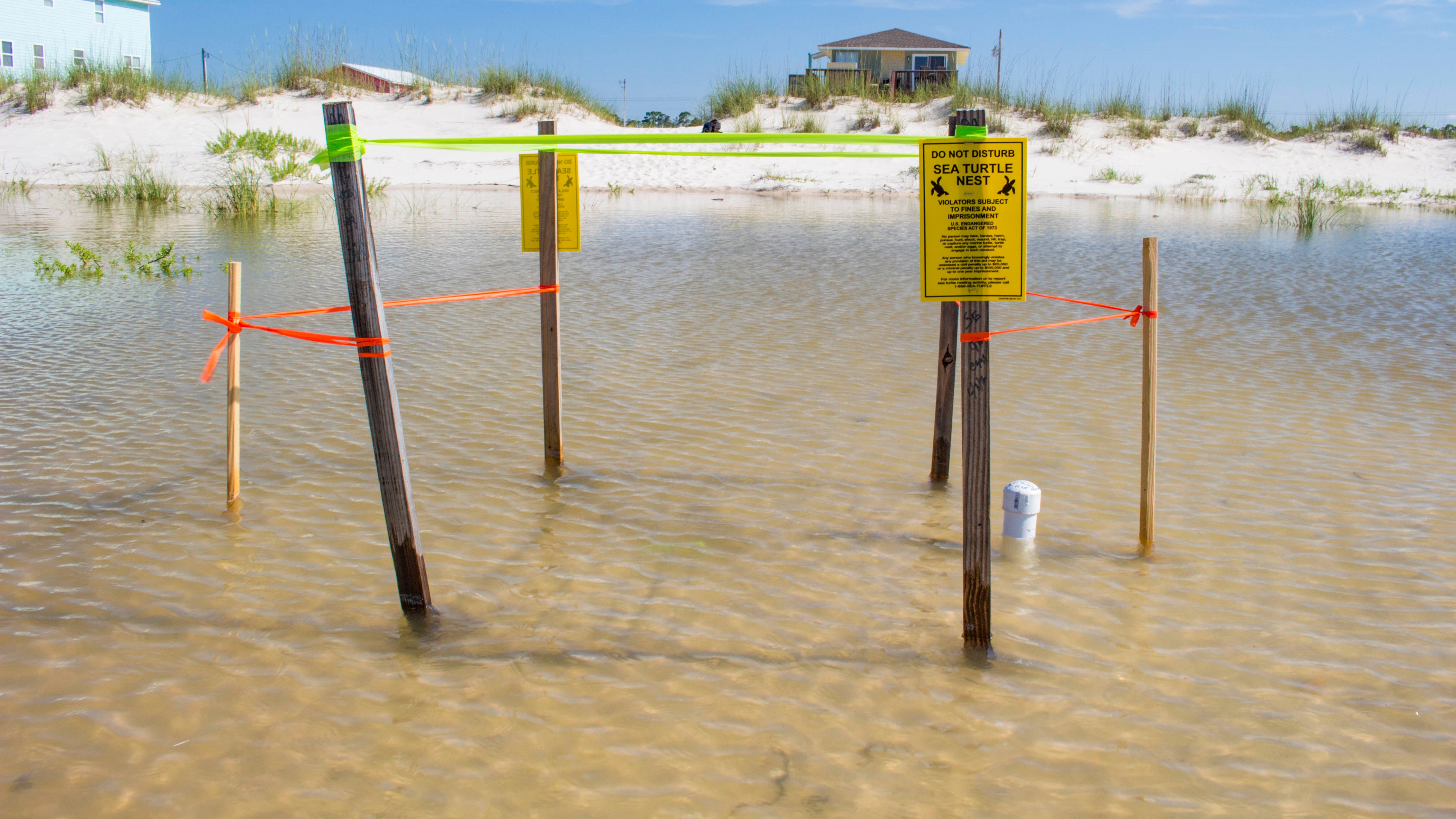SWOT Threat Series #5: Climate Change

© Matthew Ware, FSU MTRECG - taken during permitted research activities
This is the fifth and final issue of a new online series on the biggest threats to sea turtles by State of the World's Sea Turtles (SWOT). This issue has been written by Mariana Fuentes (Florida State University).
It is now widely accepted that climate change presents a significant threat to sea turtles and is expected to affect turtles in multiple ways and at all life stages. Impacts will range from the loss of nesting beaches resulting from sea level rise and increased erosion, to feminization of turtle populations as temperatures increases, changes in reproductive periodicity, shifts in latitudinal ranges, and decreased reproductive success. Although our understanding of the potential impacts of climate change on sea turtles has increased in the last decades, several knowledge gaps still exist including the ability of sea turtles to adapt to projected changes.
We know that sea turtles have survived climate fluctuations during their evolutionary history and that they may respond by shifting their nesting distribution or through changes in nest site selection, nesting season, and nest depths. However, their ability to adapt to current/future changes and buffer projected impacts is uncertain since current rates of climate change are much faster than historic rates, and today they are faced with an array of additional anthropogenic pressures.
During the last few weeks, the SWOT online series has showcased some of the major threats that sea turtles face, including fisheries bycatch, direct take, pollution, and coastal development. All these threats, and others not listed here, have detrimental effects on sea turtle populations affecting their resilience and ability to adapt to changing conditions. Thus, one of our main challenges is to understand and address the cumulative and synergistic nature of existing threats to sea turtles and climate related impacts.
To learn more about climate change and sea turtles we invite you to look through some of SWOT Report’s past articles on the topic.
SWOT Articles on Climate Change:
- Miller, J. 2007. The Mystery of How They Will Adapt - How will climate change affect sea turtles? In SWOT Report—State of the World’s Sea Turtles, vol. 2: 13.
- Mortimer, J. A. 2008. The State of the World's Hawksbills. In SWOT Report—State of the World’s Sea Turtles, vol. 3: 10-13.
- Pritchard, P. C. H. 2008. Shifting Shorelines - The Lesson of the Guianas. In SWOT Report—State of the World’s Sea Turtles, vol. 3: 22-23.
- Saba, V., & Wallace, B. 2009. Location, Location, Location - Why Leatherback Populations Vary Globally. In SWOT Report—State of the World’s Sea Turtles, vol. 4: 10-11.
- Mortimer, J. A., & Sheppard, C. 2009. Confronting Climate Change in the Indian Ocean: A Look at Coral Reefs and Nesting Beaches. In SWOT Report—State of the World’s Sea Turtles, vol. 4: 12-13.
- Bowen, B. W., & Wallace, B. 2010. How Sea Turtles Have Weathered Past Climate Changes. In SWOT Report—State of the World’s Sea Turtles, vol. 5: 13-15.
- Fuentes, M., & Hawkes, L. 2011. How Will Sea Turtles Cope with Climate Change? In SWOT Report—State of the World’s Sea Turtles, vol. 6: 12-13.
- Meyer, B. K., Vance, R. K., & Bishop, G. A. 2014. Managing Moving Targets - Identifying and Responding to Sea Turtle Nesting Range Shifts. In SWOT Report—State of the World’s Sea Turtles, vol. 9: 17.
- Meyer, B. K., Vance, R. K., & Bishop, G. A. 2014. Rising Seas - Addressing Eroding Habitats on St. Catherines Island, Georgia (U.S.A). In SWOT Report—State of the World’s Sea Turtles, vol. 9: 18-19.
- Kelez, S., Velez-Zuazo, X. 2014. Sea Turtle Nesting Expansion Into Peru Brings New Management Challenges. In SWOT Report—State of the World’s Sea Turtles, vol. 9: 20-21.
- Dutton, P. H., Balazs, G. H., Frey, A. 2014. Hawaiian Nesting Range Shift Offers Rare Learning Opportunity. In SWOT Report—State of the World’s Sea Turtles, vol. 9: 22-23.
- Horvath, E. 2016. The Deadly Bucket. In SWOT Report—State of the World’s Sea Turtles, vol. 11: 42-43.
- Eastman, S., Appelson, G. 2017. Coastal Armoring and Rising Seas Put a Squeeze on Turtles. In SWOT Report—State of the World’s Sea Turtles, vol. 12: 12-13.
Last updated on 02 September 2020


